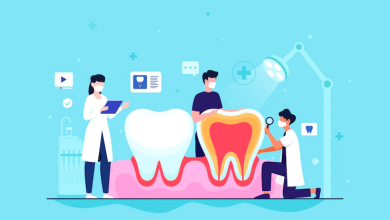Emergency Room: Fast Response and Life-Saving Care for Critical Emergencies

Most live in relative calm, interspersed by occasional moments of unexpected urgency or crisis. These unpredictable moments often lead to rushing to the nearest facility designed to handle such situations: the Emergency Room (ER).
As much as we dread the thought of a visit there, it’s a place of hope and urgency, where life often gets a second chance. In this blog post, we will talk about the critical role that the ER plays, with a particular focus on its swift response and life-saving care for emergencies.
Understanding the Purpose of the Emergency Room (ER)
The ER, sometimes known as the Accident & Emergency Department (A&E), is a specialized area of a hospital or healthcare facility. It’s designed to respond to critical situations that require immediate medical intervention.
This could range from complex health conditions such as heart attacks, strokes, or severe trauma resulting from accidents. The fundamental purpose of an ER is not to offer long-term treatment but rather immediate stabilization, resuscitation, and triage of patients who present with medical emergencies. In a nutshell, it’s there to save lives and avert the potential worsening of health conditions.
Importance of ER in Healthcare Delivery System
People often think of hospitals as wards, operation theaters, and long-term care. Still, the ER acts as the primary interface between critical situations and the healthcare delivery system. It’s like the first respondent, and for many, it’s the first point of contact with the hospital.
The ER holds strategic significance in the comprehensive healthcare delivery system. Primarily, it responds to the acute and immediate health needs of the community, but it also plays essential roles in other areas.
For instance, it offers access to healthcare for individuals who may not have primary care providers. ERs also play a critical role during public health emergencies and disasters, providing a large-scale response to health crises.
In essence, the ER sits at a vital crossroads in health care delivery, linking outpatient and inpatient services while providing round-the-clock care for urgent and emergent situations. These reasons underscore why it’s imperative to understand the significant role ERs play in the broader healthcare landscape.
Key Aspects of ER
Here are some important things about ER:
Fast Response Times
To effectively respond to emergencies, the ER is designed and equipped to deal with time-sensitive and critical health conditions. Here are some ways that ERs ensure fast response times:
- Triage system: This system helps prioritize patients based on the urgency of their condition. Nurses use a structured evaluation process to determine which patients require immediate attention.
- Streamlined workflow: ER staff follows established procedures to manage multiple cases simultaneously, ensuring that high-priority patients receive rapid care while helpful information is collected for further treatment.
- Specialized training: ER physicians, nurses, and support staff undergo specialized training in emergency medicine, allowing them to efficiently identify, evaluate, and treat various medical emergencies.
The Importance of Speedy Medical Intervention
Rapid medical intervention is essential in emergencies for several reasons:
- Preventing complications: Early intervention can help avoid potential complications arising from medical conditions, which may worsen if not treated.
- Improving patient outcomes: In many critical situations, such as heart attacks and strokes, precious minutes saved can contribute to better clinical outcomes and patient survival rates.
- Reducing long-term care: By stabilizing patients quickly and reducing complications, complex and prolonged treatment can be minimized, resulting in better recovery and shorter hospitalization times.
Types of Life-Saving Treatments Provided
ERs are equipped to provide various life-saving treatments, offering medical interventions tailored to the acute needs of emergency patients. Here are some common examples:
- Advanced Cardiac Life Support (ACLS): Key to treating patients in cardiac arrest or displaying cardiac symptoms, this includes defibrillation, medications, and supported ventilation.
- Trauma care: ERs have harrowing procedures in place to deal with severe injuries, such as fractures, dislocations, and traumatic head injuries.
- Airway management: ER staff rapidly identify and prevent airway blockage in at-risk patients, ensuring proper oxygenation and patient safety. Techniques include intubation and ventilators.
- Toxicology: ERs can handle cases of poisoning, overdoses, or exposure to harmful substances, administering antidotes and supportive care.
Critical Care Equipment Utilized in ER
The emergency room is fitted with cutting-edge equipment designed to meet the pressing needs of critically ill or injured patients. Some essential critical care equipment include:
- Defibrillators: Electronic devices that deliver electrical shock to the heart to restore normal rhythm in cardiac arrest cases.
- Ventilators: Devices that assist or support breathing by moving breathable air in and out of the lungs.
- Portable ultrasound machines: Used for rapid assessment in emergencies, such as internal bleeding, deep vein thrombosis, and fluid around the heart.
- Crash carts: Mobile stations containing essential emergency equipment, medications, and supplies, ensuring quick access during critical moments in patient care.
IV. Types of Critical Emergencies Handled by ER
Here are some of the most important emergencies that ER handles:
A. Physical Traumas and Accidents
Emergencies emanating from physical trauma and accidents are among the most common cases handled in ERs. These include vehicular accidents, falls, burns, deep lacerations, and fractures. ER personnel are trained to treat and stabilize these patients, offering immediate relief and mitigating long-term damage or disability.
B. Cardiac Emergencies
Cardiac emergencies, such as heart attacks (myocardial infarctions) and severe heart failure, are common issues managed in ER. Emergency response often involves rapid diagnosis using ECGs and cardiac markers, followed by advanced cardiac life support procedures to restore heart function and prepare the patient for more advanced interventions, like coronary angioplasty.
C. Respiratory Emergencies
Respiratory emergencies, such as severe asthma attacks, pneumonia complications, and chronic obstructive pulmonary disease (COPD) exacerbations, call for immediate and expert management in the ER. They are treated via oxygen support, medicines to open the airways, and, in severe cases, mechanical ventilation to support or control breathing.
D. Neurological Emergencies
The ER is the frontline for managing neurological emergencies like strokes, seizures, or traumatic brain injuries. These require rapid diagnosis through CT scans and immediate treatment to prevent long-term neurological damage and to preserve brain function.
V. Challenges in the ER
The fast-paced environment of an Emergency Room (ER) presents many challenges, where healthcare professionals must seamlessly address urgent medical needs amid varying degrees of complexity and uncertainty.
A. Overcrowding and Triage
Overcrowding is a significant issue plaguing ERs globally. It’s not unusual for ERs to receive more patients than they can handle at once. This poses a significant challenge for patient triage, leading to longer wait times, especially for non-critical cases. Practical solutions to this issue often involve improved workflow management, appropriate staff allocation, and community education about alternative healthcare options for non-urgent conditions.
B. Managing Diverse Emergencies Simultaneously
The ER is unique in its need to deal with a broad spectrum of medical emergencies simultaneously. Physicians and nurses must pivot quickly between diverse cases, each requiring specific knowledge, skills, and treatment protocols. This diversity of cases can be challenging to manage, but it is eased by the high levels of training ER personnel have and the structured clinical protocols they follow.
C. Handling High-Stress Situations
The ER is a high-stress environment, with the constant influx of critical cases, the urgent need for decision-making, and the high emotional intensity experienced by patients and their families. Managing this ongoing stress and preventing burnout amongst ER personnel is a significant challenge. It requires effective coping strategies, supportive team environments, and proactive mental health initiatives at the institutional level.
VI. The Role of Trained Professionals in ER
The following describes the role of trained professionals in emergency rooms.
A. Qualities of an ER Physician
The ER physician is an integral figure in the emergency department. Given the unique demands and high-pressure environment of an ER, effective physicians often exhibit:
- Quick Decision-Making Skills: With little time to spare, ER physicians need to make fast and accurate decisions that can profoundly affect patient outcomes.
- Broad Medical Knowledge: ER physicians treat a wide range of conditions and must have extensive knowledge across multiple disciplines in medicine.
- Resilience and Stamina: The constant pressure and unpredictable nature of the ER require a high level of personal resilience and physical stamina.
- Effective Communication Skills: ER physicians must communicate clearly and effectively with their team, patients, and family members.
B. Importance of Teamwork in the ER
The fast-paced and collaborative nature of ER work makes teamwork crucial. Each member of the team must effectively collaborate to provide optimal patient care. Teamwork enables a streamlined workflow, ensuring rapid response times and efficient patient management despite the frequently chaotic ER environment.
C. Role of Different ER Staff
In an ER, different staff members fulfill various roles, all essential for effective functioning:
- Nursing Staff: Nurses perform many tasks, such as triage, administering medication, monitoring the patient’s physical condition, and providing primary care. They often serve as the constant at the patient’s bedside, relaying information to the physicians, helping with procedures, and comforting patients and their families.
- Technicians: Technicians assist medical and nursing staff by performing essential tasks like drawing blood, performing EKGs, setting up procedures, and sometimes assisting in those procedures.
- Ancillary Staff: This group includes radiology staff who provide critical diagnostic imaging, respiratory therapists who manage ventilators and oxygen delivery, pharmacists who assist with appropriate medication use, and laboratory staff who supply essential diagnostic test results.
- Social Workers/Case Managers: These professionals support patients and families by coordinating care transition planning, supporting insurance documentation, and providing supportive services in cases of stress or grief.
- EMTs/Paramedics: Externally, EMTs and paramedics often initiate emergency care. They communicate vital information to ER personnel and assist in transferring the patient for continued care.
Each role complements the other, creating a comprehensive, efficient, and empathetic care environment for patients in their critical time of need.
VII. Patient Experience in the ER
Understanding patients’ rights during an ER visit is essential for ensuring they and their caregivers feel supported and respected. Several fundamental rights include:
- Right to Emergency Care: All patients who arrive at an ER, regardless of their ability to pay, should receive a medical screening examination and stabilization before being discharged or transferred to another facility.
- Right to Informed Consent: Patients have the right to know the risks and benefits of treatment options, and they must consent to the proposed medical intervention before it is administered.
- Right to Confidentiality: Patient information and medical records are protected by law. They must be handled with the highest confidentiality throughout the treatment process.
- Right to Pain Relief: Patients have the right to pain relief measures when medically appropriate, recognizing that pain management is an essential aspect of healthcare.
- Right to Respect and Dignity: All patients should be treated with utmost respect and dignity, regardless of age, preferred gender, race, or socioeconomic status.
Dealing with Uncertainty and Anxiety
Visiting the ER can be a stressful and uncertain experience. Healthcare workers need to be considerate of this heightened anxiety. Some approaches to easing patient anxiety include:
- Transparent Communication: Providing clear information about the patient’s condition, potential treatments, and expected outcomes can help alleviate anxiety and provide comfort.
- Empathy and Reassurance: Healthcare providers should approach their patients empathetically and aim to reassure them that their care is a priority.
- Addressing Concerns: Actively listen to the patients’ and caregivers’ concerns, answer their questions, and alleviate their fears in accurate and empathetic terms.
Typical Steps in an ER Visit
The process of an ER visit typically includes the following steps:
Registration: The patient or caregiver provides basic personal information and presents their ID and insurance cards.
Triage: A nurse assesses the patient’s condition and prioritizes the urgency of treatment based on their symptoms and vital signs.
Evaluation: A physician or nurse practitioner examines the patient, orders necessary tests, and obtains information about their medical history and symptoms.
Diagnostic Testing: Based on the initial evaluation, diagnostic tests (labs, X-rays, CTs, etc.) may be ordered.
Treatment: The ER physician creates a treatment plan and administers the required medical interventions. Nurses often carry out the treatment and monitor the patient’s response.
Disposition: Patients are discharged with follow-up instructions, admitted for further observation/treatment, or transferred to a specialized unit or facility.
The Bottomline
In summary, emergency rooms are crucial to our healthcare system, providing immediate and lifesaving care to patients facing critical emergencies. Trained professionals, specialized equipment, and established procedures ensure ERs can manage diverse medical cases and respond to time-sensitive emergencies quickly.
Amidst the challenges, teamwork, empathy, and efficient communication are vital. As patients and caregivers, understanding your rights and familiarizing yourself with the ER process can ease anxiety, provide quality care, and improve overall healthcare experiences.
In light of the importance of emergency medicine, we encourage everyone to educate themselves on when and how to access emergency care, as well as to share their knowledge with their communities.
Becoming familiar with local healthcare alternatives and following preventative care measures can help reduce unnecessary ER visits and ensure that resources are best allocated in critical situations.
Remember, in times of need, the ER for severe emergencies in Kingwood, TX, is a frontline defense to save lives and protect the health of those facing urgent medical help.




